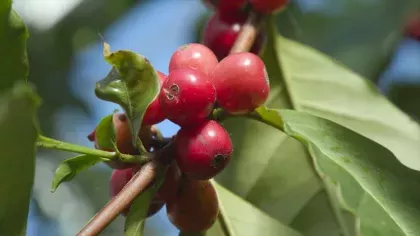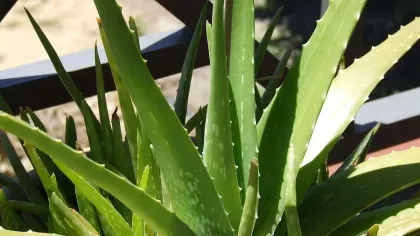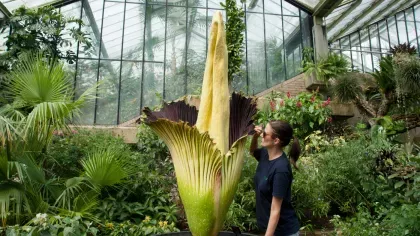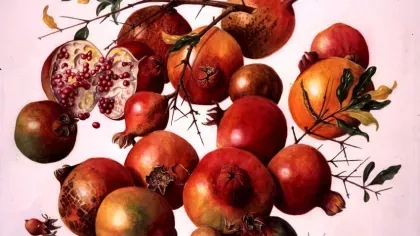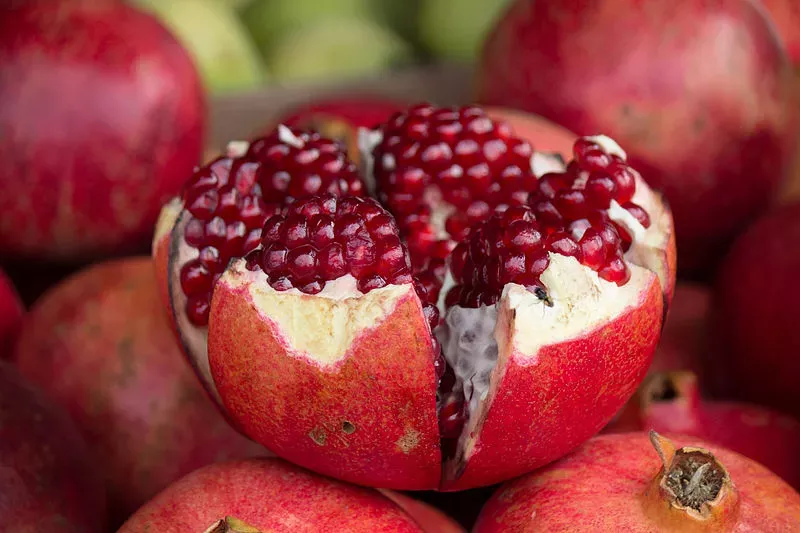
Pomegranate
On this page
The pomegranate is the crown jewel of the fruit world.
For thousands of years, the pomegranate has been celebrated by different cultures and civilizations around the world; it appears in ancient myths and religious traditions.
The pomegranate has also been hailed as a superfruit for its significant nutritional and medicinal properties that are used traditionally to treat conditions from digestive disorders to heart disease.
Plant description
The pomegranate plant is a large shrub or small tree that has smooth, evergreen leaves and showy orange to red flowers. It has rounded fruit with a dry outer covering (husk) made up of two layers: (1) a hard-outer layer called an epicarp, (2) a soft inner layer called a mesocarp. The inner mesocarp has distinct chambers that contain fleshy seeds.




Plant uses
Beauty and cosmetics
Extracts from the seeds of pomegranates are used in skincare products as they contain antioxidant compounds and are also included in beauty products for their exotic, sweet fragrance.
Cultural
During the Iranian tradition Yalda Night, people come together on winter solstice and eat pomegranate fruit to celebrate the victory of light over darkness.
Food and drink
Pomegranate seeds can be eaten raw or juiced. They are a good source of fibre, vitamins, and minerals.
Health
Ancient cultures used pomegranates in remedies for digestive disorders, skin disorders, and intestinal parasites. Many of these traditions continue to this day.
Modern day research has revealed that pomegranates contain compounds that could contribute towards preventing conditions such as heart disease, diabetes, and cancer. However, further research is needed to support these findings.
Did you know?
Pomegranate fruit are technically berries. They are fleshy fruit that come from the ovary of a single flower.
In Ancient Iranian Christianity, the pomegranate was believed to be the real forbidden fruit in the Garden of Eden.
According to Greek mythology, Hades used pomegranate seeds to trick Persephone into returning to the underworld.
Where in the world?

Grows in well-drained soils in sheltered positions with full sun at an altitude of 1000 — 2775m.
Find it in our gardens
Kew Gardens
A botanic garden in southwest London with the world’s most diverse living plant collection.
Location
South Octagon of the Temperate House.
View map of Kew Gardens